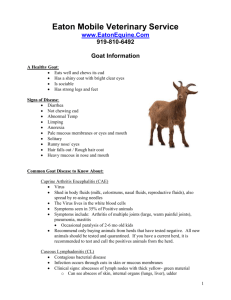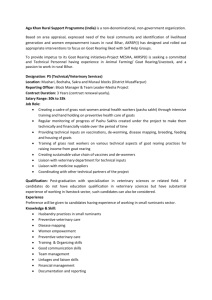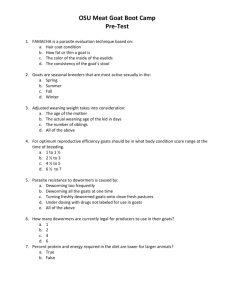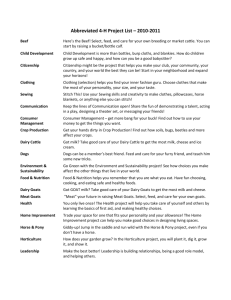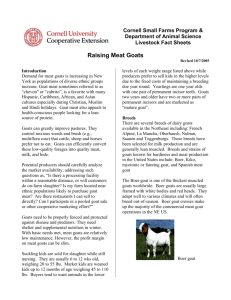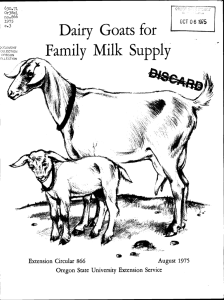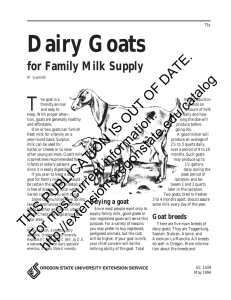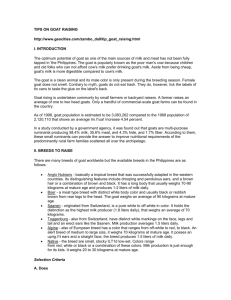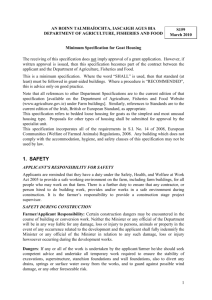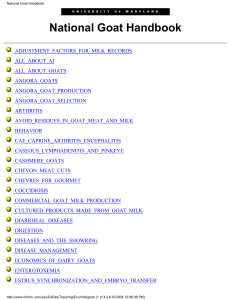The „ducth family" Diary Goat Farm at the
advertisement
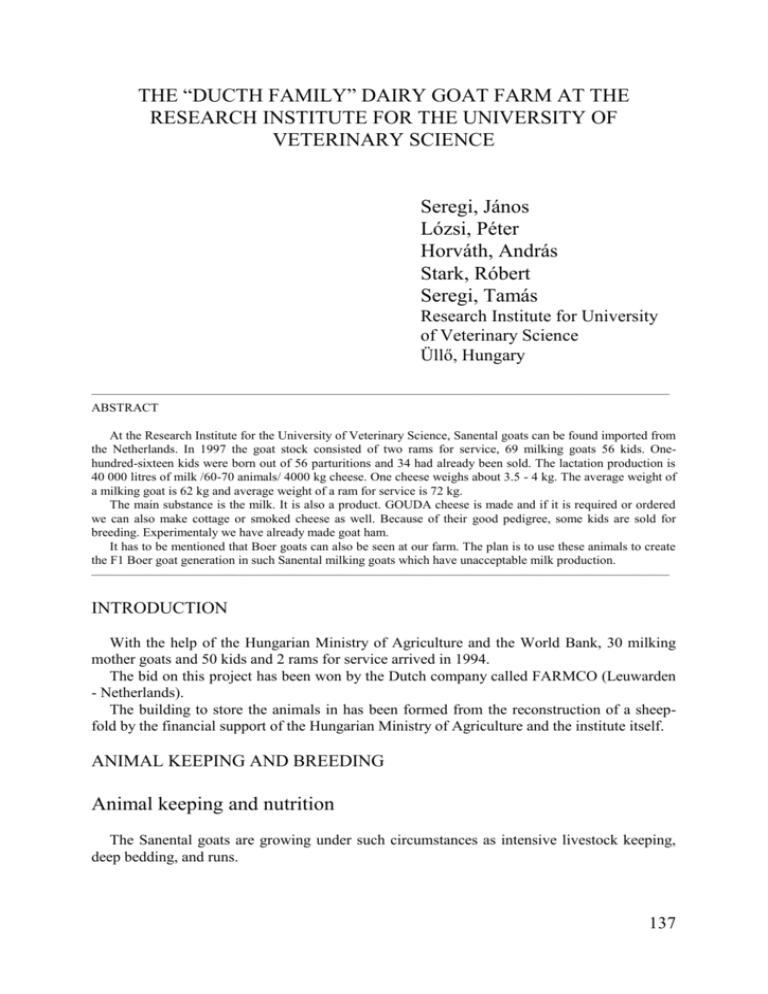
THE “DUCTH FAMILY” DAIRY GOAT FARM AT THE RESEARCH INSTITUTE FOR THE UNIVERSITY OF VETERINARY SCIENCE Seregi, János Lózsi, Péter Horváth, András Stark, Róbert Seregi, Tamás Research Institute for University of Veterinary Science Üllő, Hungary ————————————————————————————————————————————— ABSTRACT At the Research Institute for the University of Veterinary Science, Sanental goats can be found imported from the Netherlands. In 1997 the goat stock consisted of two rams for service, 69 milking goats 56 kids. Onehundred-sixteen kids were born out of 56 parturitions and 34 had already been sold. The lactation production is 40 000 litres of milk /60-70 animals/ 4000 kg cheese. One cheese weighs about 3.5 - 4 kg. The average weight of a milking goat is 62 kg and average weight of a ram for service is 72 kg. The main substance is the milk. It is also a product. GOUDA cheese is made and if it is required or ordered we can also make cottage or smoked cheese as well. Because of their good pedigree, some kids are sold for breeding. Experimentaly we have already made goat ham. It has to be mentioned that Boer goats can also be seen at our farm. The plan is to use these animals to create the F1 Boer goat generation in such Sanental milking goats which have unacceptable milk production. ————————————————————————————————————————————— INTRODUCTION With the help of the Hungarian Ministry of Agriculture and the World Bank, 30 milking mother goats and 50 kids and 2 rams for service arrived in 1994. The bid on this project has been won by the Dutch company called FARMCO (Leuwarden - Netherlands). The building to store the animals in has been formed from the reconstruction of a sheepfold by the financial support of the Hungarian Ministry of Agriculture and the institute itself. ANIMAL KEEPING AND BREEDING Animal keeping and nutrition The Sanental goats are growing under such circumstances as intensive livestock keeping, deep bedding, and runs. 137 By a Dutch prescription for the milking goat, a nutrient is produced by a Hungarian nutrient company called Monortáp. The milking animals have been implanted with responders controlled by a computer and the system is connected to some automatic nutrient feeders. The amount of the concentrate was decided after the monthly milking. Animal breeding Two rams for service arrived with the flock of goats. During the breeding season beginning in September 1994, these rams were used for natural mating. In spring 1995, 90 kids were born from 51 mothers. In the autumn of 1995, the E.T. programme was made cooperatively with Professor Brem and his colleagues (University for Animal Science, Vienna ). During this procedure frozen “bur” goat embryos were transferred into our Sanental recipients. Three kids have been born out of this programme. Another programme went on parallel with this project. After synchronization, five donor animals were mated artificially with sperm collected from the two rams for service. Embryos gained in such a way have been transfered to our recipients. Kids born during this project are the results of the first E.T. on goats made in Hungary. Two new rams for service had been bought from the Netherlands and were used for mating in the fall of 1996. In 1997, 116 kids were born from 56 lambings. The breeding and production data have been reported monthly to the Alpine and Sanental Goat Breeder Association in Hungary. MILKING The mothers are being milked twice a day by a Bou-Matic milker. The 2x8 abreast milk parlour is run by one person and she milks 60-70 goats in 1.5 hours. The lactation period lasts on average 280 days and the average milk production is 710 litres/animal/year at our institute. All milk is used for cheese production. Since the beginning of our goat project 8 400 kg of goat cheese have been made. Eighty-six male kids have been sold to goat breeders and the female ones are kept and raised for breeding at our institute. 138

